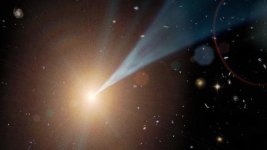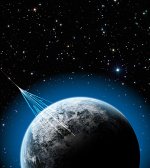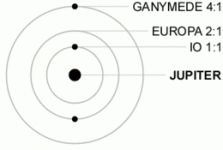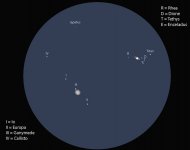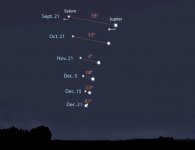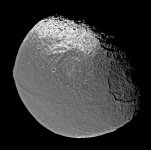Just for fun, I thought I'd Giggle "fastest material objects in the universe". 
Here's what I came up with:

Here's what I came up with:
A blazar is a hungry super-massive black-hole in the heart of a distant galaxy that produces a high-energy jet viewed face-on from Earth. Blazar - WikipediaAmong the speed demons of the universe are Jupiter-sized blobs of hot gas embedded in streams of material ejected from hyperactive galaxies known as blazars.
More information on UHECRs here:Ultra-high Energy Cosmic Rays | COSMOSUltra high-energy cosmic rays (UHECRs), which may originate in a collision of galaxy clusters, are slamming into Earth's atmosphere at more than 99.9 percent of the speed of light. Cosmic 'rays' are not light, but are highly energetic subatomic particles, thought to be mostly protons.
Attachments
There was an experiment done during the Apollo program where the astronauts put on an eye mask (like those ones dished out on overnight intercontinental flights) and they could detect flashes of light. The hypothesis was that high energy particles were striking the rods in the retinas in the back of their eye, triggering the flash.
One wonders what the health implications of this are since they’d be slamming into other body cells and perhaps damaging them.
One wonders what the health implications of this are since they’d be slamming into other body cells and perhaps damaging them.
Can’t understand why the central pod over the dish had to weigh nine hundred tons! Receiver, amplifier, coax down to main signal processing equipment on the ground and job done. 100 kg and were being exceedingly conservative. Throw in a refrigeration unit and add another 50 kg then worst case.
😕
😕
0^0 sounds like a job for Andrew Wiles.
About the length contraction thing, I’ve seen two versions of what it must be like traveling at c for the observer:-
1. The observer feels as if they are stationary. Everything rushes past. Objects approaching have a blue hue to them. If the observer looks behind them, the objects receding away from them appear to be red shifted.
2. Everything is flattened as in a sheet of paper ie it exists only in 2D. The whole experience of moving at c passes by in an instant.
Which is it?
Roger Penrose has shown that as light passes through space it twists, or rotates.
Many theories. Few real answers.
Any takers?
Is it 1 or 2 or something else?
Remember, you the observer, is moving at c.
A good question.Can’t understand why the central pod over the dish had to weigh nine hundred tons! Receiver, amplifier, coax down to main signal processing equipment on the ground and job done. 100 kg and were being exceedingly conservative. Throw in a refrigeration unit and add another 50 kg then worst case.
😕
I though, the weight of a cooling plant, but I see you considered it. May be, it needs more than 50kg, but 900 tons ???
May be the need for a highly stabilized platform with heavy masses and gyroscopes.
Who knows ?
I am interested, why 900 000 kg ? Is it really tons at 1 ton = 1000 kg ?
1. Here we are dealing with the relativistic Doppler effect. Let's consider an observer moving at an imaginably high speed relative to a 'stationary' background of yellow stars. The light ahead of the observer is blueshifted to a wavelength in the far ultraviolet, while light behind the observer is redshifted to the short wavelength infrared. Relativistic Doppler effect - WikipediaAbout the length contraction thing, I’ve seen two versions of what it must be like traveling at c for the observer:-
1. The observer feels as if they are stationary. Everything rushes past. Objects approaching have a blue hue to them. If the observer looks behind them, the objects receding away from them appear to be red shifted.
2. Everything is flattened as in a sheet of paper ie it exists only in 2D. The whole experience of moving at c passes by in an instant.
Which is it?
2. I think I may have tackled the second point to some extent earlier when I said that, if an object moved past us at a speed approaching that of light, then it would need to have a physical length equivalent to the diameter of our Solar System in order to give us any chance of perceiving at as an object with any length at all. And, in addition, the frequency shift in its light due to the relativistic Doppler might make the object totally invisible to human eyes anyway! 😎
Last edited:
Having reviewed my post, I see that you are talking about an observer "travelling at c".
"Close to c" is what we would have to consider..
"Close to c" is what we would have to consider..
Last edited:
Galu,
Of course it’s hypothetical.
However, if something has to have a length of the diameter of the solar system to be observable, then surely this makes (2) the more likely scenario?
So looking forward, a flash, if looking back, perhaps so red shifted as to be invisible?
Of course it’s hypothetical.
However, if something has to have a length of the diameter of the solar system to be observable, then surely this makes (2) the more likely scenario?
So looking forward, a flash, if looking back, perhaps so red shifted as to be invisible?
Last edited:
I did some editing before I saw your reply, Bonsai. Made it more friendly!
What you've just posted agrees with my thinking on the matter, although I'm not so sure about the "flash".
Looking forward, everything would be shifted into the invisible ultraviolet.
Both scenarios would happen together, would they not?
What you've just posted agrees with my thinking on the matter, although I'm not so sure about the "flash".
Looking forward, everything would be shifted into the invisible ultraviolet.
Both scenarios would happen together, would they not?
Last edited:
Ok, so it’s shifted on both ends out of human sight. Makes sense. As you decrease your speed the flash and red shift become observable.
'Christmas Star'
A Great Conjunction will occur on the winter solstice (December 21st).
This year's Great Conjunction is the closest for 400 years, so try not to miss it!
How to observe it from the UK in all its glory is detailed below.
How and when to see the Great Conjunction of Jupiter and Saturn in December 2020 - the ‘Christmas Star’
A Great Conjunction will occur on the winter solstice (December 21st).
This year's Great Conjunction is the closest for 400 years, so try not to miss it!
How to observe it from the UK in all its glory is detailed below.
How and when to see the Great Conjunction of Jupiter and Saturn in December 2020 - the ‘Christmas Star’
This conjunction of Jupiter and Saturn on Monday 21 is going to be hard to see even if the weather is clear.
Looks like twilight 4.30 PM UK time is the first chance to glimpse it. And it is close to setting after the Sun in the West. The crescent Moon should be a good pointer.
I think I'll get to the seafront on Saturday if it is clear and see how it looks. A rehearsal. Should be very close even then. maybe 1/4 of a moons width. I'll take the binos.
Terrible light pollution here. I couldn't see a lot tonight, but Orange Mars is fading a lot. Red Betelgeux in Orion seemed quite bright, about as bright as Aldeberan in Taurus following the belt upwards, so must be a respectable magnitude 0.8. Sirius very bright following the belt downwards. Bright Capella was bang overhead.
Looks like twilight 4.30 PM UK time is the first chance to glimpse it. And it is close to setting after the Sun in the West. The crescent Moon should be a good pointer.
I think I'll get to the seafront on Saturday if it is clear and see how it looks. A rehearsal. Should be very close even then. maybe 1/4 of a moons width. I'll take the binos.
Terrible light pollution here. I couldn't see a lot tonight, but Orange Mars is fading a lot. Red Betelgeux in Orion seemed quite bright, about as bright as Aldeberan in Taurus following the belt upwards, so must be a respectable magnitude 0.8. Sirius very bright following the belt downwards. Bright Capella was bang overhead.
Last edited:
Not long to wait now in cosmic terms, but hopefully no immediate need to put your life plans on ice!Not to mention the upcoming Ice Age 😱


Estimates vary, but previous interglacial periods have lasted for around 10,000 years. Interglacial - Wikipedia
Particularly in Scotland!This conjunction of Jupiter and Saturn on Monday 21 is going to be hard to see even if the weather is clear.
To quote Allan Sherman, "And they say we'll have some fun if it stops raining!"
Hello Muddah, Hello Fadduh (Camp Granada Song) with Lyrics Sing-Along, Allan Sherman, 1963, updated - YouTube
I think the best way for me to see the Great Conjunction at this high latitude is to watch the livestream from Lowell Observatory in Arizona, USA.
The livestream can be accessed from the Cambridge Independent site:
How and when to see the Great Conjunction of Jupiter and Saturn in December 2020 - the ‘Christmas Star’
The livestream can be accessed from the Cambridge Independent site:
How and when to see the Great Conjunction of Jupiter and Saturn in December 2020 - the ‘Christmas Star’
This conjunction is terrifically interesting to me. 😀
We have the Jovian moons aligning with Saturn's moons in one Grand View in the Binoculars.
Two spectacular Ice Giants. Jupiter's Io, Europa and Ganymede are interesting enough in their own right. A 1:2:4 orbital resonance with outer Callisto playing some undefined part.
Saturn's moons are also fun. Titan and Enceladus are considered candidates for dull microbial life and NASA is off to check them out soon. But it is Saturn's Iapetus that interests me. An outsider, but maybe worth a bet. 😎
We have the Jovian moons aligning with Saturn's moons in one Grand View in the Binoculars.
Two spectacular Ice Giants. Jupiter's Io, Europa and Ganymede are interesting enough in their own right. A 1:2:4 orbital resonance with outer Callisto playing some undefined part.
Saturn's moons are also fun. Titan and Enceladus are considered candidates for dull microbial life and NASA is off to check them out soon. But it is Saturn's Iapetus that interests me. An outsider, but maybe worth a bet. 😎
Attachments
Is that because you love to crack a nut!But it is Saturn's Iapetus that interests me.

Mystery of Saturn's Walnut Moon Cracked? | Space
Attachments
- Status
- Not open for further replies.
- Home
- Member Areas
- The Lounge
- What is the Universe expanding into..
